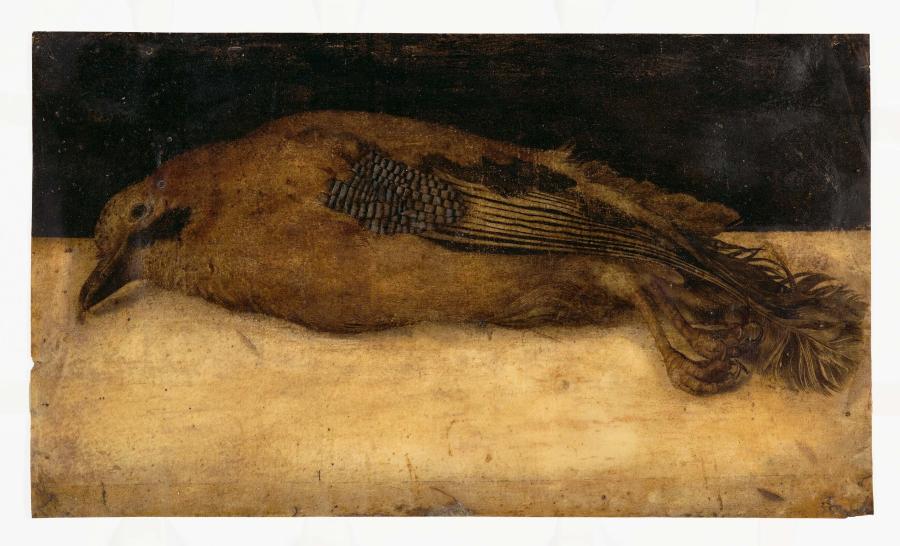Specifications
| Title | Dead Jay (Garrulus glandarius) |
|---|---|
| Material and technique | Brush and black, brown and grey ink, white priming in the foreground, on parchment subsequently varnished |
| Object type |
Drawing
> Two-dimensional object
> Art object
|
| Location | This object is in storage |
| Dimensions |
Height 188 mm Width 325 mm |
|---|---|
| Artists |
Attributed to:
Jacopo de' Barbari
|
| Accession number | D I 238 (PK) |
| Credits | Loan Cultural Heritage Agency of the Netherlands (former Koenigs collection), 2004 |
| Department | Drawings & Prints |
| Acquisition date | 2004 |
| Creation date | in circa 1505-1515 |
| Collector | Collector / Franz Koenigs |
| Provenance | Art dealer Julius W. Böhler (1883-1966), Lucerne; Franz W. Koenigs (1881-1941), Haarlem, acquired in 1929; D.G. van Beuningen (1877-1955), Rotterdam, acquired with the Koenigs Collection in 1940; unlawfully sold to the Nazi's in 1940; stored in Dresden (1941-45); seized by the Soviet Army’s Trophy Division; deposited in the Pushkin Museum, Moscow, and afterwards in the Bogdan & Varvara Khanenko Museum, Kyiv; restituted to The Netherlands by Ukraine in 2004; on loan from The Cultural Heritage Agency (RCE), 2004 |
| Exhibitions | Rotterdam 2004a, no. 135; Rotterdam 2009 (Vogels) |
| Internal exhibitions |
Prentenkabinet: Vogels van diverse pluimage (2009) |
| Research |
Show research Italian Drawings 1400-1600 |
| Literature | Vienna 1985, p. 46, fig. 6.2; Elen 2004, no. 135, ill. (Jacopo de' Barbari); Ferrari 2006, pp. 156-57, ill. |
| Material | |
| Object | |
| Geographical origin | Italy > Southern Europe > Europe |
Do you have corrections or additional information about this work? Please, send us a message























